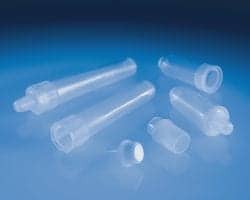A new study that used saliva samples to measure virus-specific antibodies found it served as a useful and easy strategy to detect for SARS-CoV-2 infections.
The study, a collaboration between the Barcelona Institute for Global Health (ISGlobal), an institution supported by “la Caixa” Foundation, and the Hospital Sant Joan de Déu (HSJD), followed over 1,500 children who last year attended summer schools in Barcelona. The results were published in BMC Medicine.
Saliva samples are easy to obtain and useful for measuring antibodies, which could facilitate epidemiological surveillance in school settings.
An obstacle to understanding children’s susceptibility to SARS-CoV-2 infection and their capacity to infect others is that most infections in children are mild or asymptomatic, and are therefore missed.
To establish whether an individual has been exposed to SARS-CoV-2 in the past, one needs to look for virus-specific antibodies in blood. Measuring the prevalence of antibodies over time in a cohort of children can provide very valuable epidemiological information. However, this requires techniques that are sensitive and minimally invasive.
In this study, performed through the Kids Corona platform, the team led by Carlota Dobaño, PhD, from ISGlobal, and Iolanda Jordan, from HSJD, used saliva instead of blood to measure virus-specific antibodies in over 1,500 children who attended different summer schools in Barcelona in 2020, as well as around 400 adult staff.
Two saliva samples per participant were analyzed, one at the beginning and one at the end of the camp stay, and different antibody types (IgG, IgA and IgM) targeting different viral antigens were measured.
The results show that 3.2% of the summer school participants developed antibodies between the first and second sample, which is indicative of new infections. This is six times higher than the infection rate estimated by weekly PCR screening.
“It has been reported that some children can be positive for antibodies despite being negative by PCR, which suggests that they can generate an immune response that prevents the establishment of SARS-CoV-2 infection,” says Dobaño, first author of the study. It can also be due to the fact that asymptomatic children have lower viral loads or that they clear the virus faster.
In addition, the analysis shows that the percentage of new infections was higher in adults (2.94%) than in children (1.3%), which suggests differences in infection and transmission dynamics.
Finally, contrary to what has been observed in blood, asymptomatic people had higher levels of anti-Spike antibodies in saliva, suggesting these antibodies play a protective role in respiratory mucosae.
“This means that anti-Spike antibodies in saliva could be used to measure protective immunity upon vaccination, especially in the case of intranasal vaccines,” says Gemma Moncunill, PhD, senior coauthor of the study.
Featured image: The study measured SARS-CoV-2 antibodies in saliva of children attending summer schools in Barcelona. Photo: Hospital Sant Joan de Déu, Barcelona





